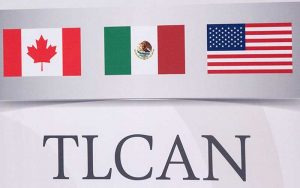
On October 1 of this year, an agreement was announced between the governments of Mexico, Canada and the United States of America to replace the North American Free Trade Agreement (“NAFTA”). The name of this new agreement will be AEUMC, or “USMCA”, which comes from the English acronym of each of the countries that are part of this treaty.
The draft agreement now under discussion in the congresses of each of the countries includes 34 chapters, which are listed below:
- Initial Provisions and General Definitions
- National Treatment and Market Access for Goods
- Agriculture
- Rules of Origin, with Product Specific Rules
- Origin Procedures
- Textiles and Apparel
- Customs Administration and Trade Facilitation
- Recognition of the direct, inalienable and imprescriptible ownership of hydrocarbons by the Mexican State.
- Sanitary and Phytosanitary Measures
- Commercial Remedies
- Technical Barriers to Trade
- Sector Annexes
- Public Sector Procurement
- Investment
- Cross-Border Trade in Services
- Temporary Entry
- Financial Services
- Telecommunications
- Digital Commerce
- Intellectual Property
- Competition Policy
- State-Owned Enterprises
- Laboral
- Environment
- Small and Medium Enterprises
- Competitiveness
- Anticorruption
- Good Regulatory Practices
- Publication and Administration
- Administrative and Institutional Provisions
- Dispute Resolution
- Exceptions and General Provisions
- Macroeconomic Policies and Exchange Rate Issues
- Final Provisions.
As next steps, each of the countries must send the draft agreement for review and approval by their respective congresses, with the goal of signing the agreement no later than the last day of November 2018. In the case of Mexico, the agreement must be ratified by the Senate, for which reason the Executive sent the bill to the corresponding Senate committees for their analysis.
In the case of Mexico, the agreement must be ratified by the Senate, for which reason the Executive sent the bill to the corresponding Senate committees for their analysis.
Mexico is the country with the most free trade agreements in the world and this allows access to millions of consumers; however, NAFTA has been the most important so far in terms of business volume. NAFTA was originally signed in 1992 and entered into force in all three countries in 1994.
This agreement has allowed Mexico to complement its economy with the productive processes of Canada and the United States and has facilitated the exchange of goods and services, which has led to the attraction of productive investments.
According to data from the American Chamber of Commerce, Mexico exchanges close to $2,600,000,000 million dollars worth of goods with the United States every day. For this reason, it was very important for Mexico’s economy to continue to be part of this treaty with the northern countries.
The signing of this new agreement ensures the permanence and increase of foreign investment in Mexico. However, it presents new challenges for the country, as the agreement imposes certain commitments on Mexico to continue legislating in order to promote certain sectors. We will be reporting on the progress of the review of this new agreement and the impact it will have on each sector.





